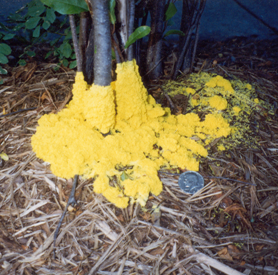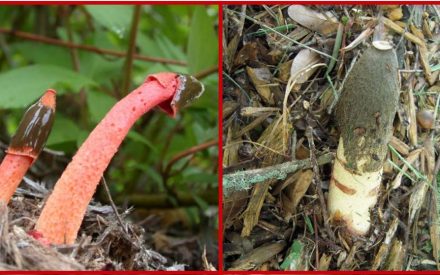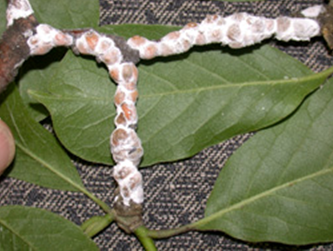
What are lichens?
Lichens are organisms that arise from mutually beneficial interactions between certain filamentous fungi, algae and yeasts. The filamentous fungi provide the physical structures of the lichens, as well as protection for the algae and yeasts. The algae produce food for the fungi and yeasts via photosynthesis. The yeasts are thought to produce compounds to fend off disease-causing organisms and insect pests.
What do lichens look like?
Lichens come in four basic growth forms. Crustose lichens are crust-like and adhere tightly to the surface upon which they grow. Foliose lichens are leaf-like and composed of flat sheets of tissue that are not tightly bound together. Squamulose lichens are composed of scale-like parts. Fruticose lichens are composed of free-standing branching tubes.
Where do lichens come from?
Lichens are everywhere. There are an estimated 13,500 to 17,000 species of lichens, and lichens can be found growing in tropical, temperate and polar regions throughout the world. Lichens will grow on almost any surface that is stable and reasonably well-lit. In temperate regions, lichens can often be found growing on the bark of trees or old fence posts. Others lichens grow in less hospitable places, such as bare rock surfaces or old headstones in graveyards, where they aid in the breakdown of rocks and the formation of soil.

How do I save a tree with lichens?
Don’t panic! Lichens do not harm trees; they are not pathogens or parasites, and do not cause disease. Lichens are self-reliant, with the algal component of the lichen producing food for the organism via photosynthesis. Lichens absorb water and minerals from rainwater and the atmosphere, and because of this, they are extremely sensitive to air pollution. As a result, the presence or absence of certain lichen species can be used as an indicator of levels of atmospheric pollutants. Information on the abundance and species of lichens growing in an area can give a good indication of the local air quality.
For more information on lichens:
Contact the University of Wisconsin Plant Disease Diagnostics Clinic (PDDC) at (608) 262-2863 or pddc@wisc.edu.
Authors: Ken Frost* and Brian Hudelson, UW-Madison Plant Pathology
Last Revised: 03/01/2024
D-number: D0072
*Completed as partial fulfillment of the requirements for Plant Pathology 875 – Plant Disease Diagnostics Clinic Internship at the University of Wisconsin Madison.
Thanks to Lisa Johnson, Barb Larson and Mike Maddox for reviewing this document. Thanks also to the Wisconsin State Herbarium and Marie Trest for providing the photo.
A complete inventory of UW Plant Disease Facts is available at the University of Wisconsin-Madison Plant Disease Diagnostics Clinic website: https://pddc.wisc.edu.
Send a Plant Sample for Analysis
Be cautious when self-diagnosing plant health issues. Very few diseases can accurately be diagnosed by eye.
Contact the UW Plant Disease Diagnostics Clinic (PDDC), and for a small fee, clinic staff can examine a plant, determine the cause of the disease/disorder, and provide advice on how to control or prevent the issue.
Download Article





 Slime Molds
Slime Molds Stinkhorns
Stinkhorns Bird’s Nest Fungi
Bird’s Nest Fungi Magnolia Scale
Magnolia Scale


